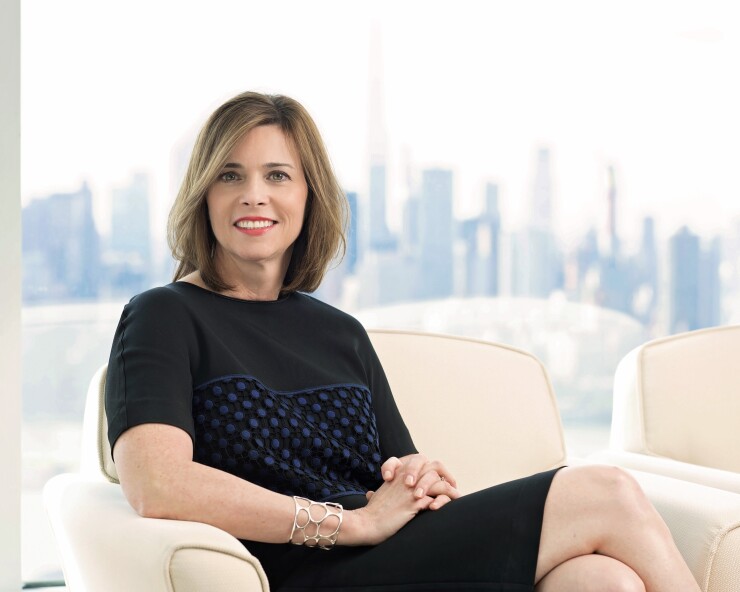There was a time when Alice Milligan thought she was done with financial services. The chief customer and digital experience officer for Citigroup's global cards unit wanted to be in a business with more warmth, one that allowed her to appeal to customers' emotions.
After 15 years at American Express, she left to become the senior vice president of direct and digital marketing for the luxury handbag maker Coach. It took that year's stint in retail for Milligan to realize two things: Hawking handbags, nice though they were, felt superficial. And banking is far from bloodless. In fact, she said, it is "rooted in the foundation of the American dream."
"When we give you money for a mortgage, when you qualify for a credit card, the reason you do those things is to accomplish your dreams: to buy the house you want, to get your family that TV for the Super Bowl party," Milligan said.
That sensibility informs her transformation of Citi's cards business, which combines mobile-first technology initiatives with an intense focus on customer satisfaction. Of the services that are available to Citi card customers through any channel, Milligan has made 85% of them available on the mobile app, and plans to make it 100% by the end of 2017. Those achievements are among the reasons she is a Digital Banker of the Year finalist.

Upon joining the $1.7 trillion-asset bank in 2014, Milligan faced an uphill battle convincing senior executives that customer satisfaction was worth spending money on. She focused initially on quick wins to persuade them. In one instance, by going through the analytics she discovered that some customers were experiencing login errors, which compelled them to call Citi's service center—an expense for the bank. By fixing that problem, she not only lifted customer satisfaction but was demonstrably able to save the bank money.
Her team has since grown tenfold, from 40 to 400 people, allowing her to hugely accelerate what was once a roughly 12-month development cycle for new digital features. In 2016, she oversaw the launch of 86 features, an 85% increase over the year before. She has also picked up talent from Google, Amazon and PayPal—a hiring strategy that fits with her decision to approach new products and services more like a tech firm than a 200-year-old bank.
"What Alice is doing over at Citi is saying, 'Let's be agile, quick on our feet, put it [a feature] in the market, react to it, see what's working, see what's not, and improve it, learn from it, make more progress,' " said Mark Schwanhausser, director of omnichannel financial services at Javelin Strategy & Research. "That's a way of thinking that's critical if you want to be an innovative bank in a fast-moving world."
Schwanhausser likens the pace of innovation in places like Silicon Valley to the famous hustle of the Golden State Warriors basketball team currently leading the NBA Finals. "
The new features Milligan is proudest of include the ability to lock and unlock a credit card if it's lost or stolen, track a replacement card and file a
"Our customers are really starved for time, and what they really need is simplicity and convenience," Milligan said.
Indeed, Citi customers have turned to mobile in droves. Last year, the number of Citi mobile app customers grew by 50% in the United States, and the number of app downloads doubled. For the first time, more customers were logging into the bank's mobile app than into its website.
"For a while we looked at mobile as a companion to our website," Milligan said, "and we've completely flipped that."
Citi has scaled back its retail presence since the financial crisis but has managed to hold on to most of its customers, in large part by improving its digital services. Milligan doesn't see customer satisfaction as merely a "soft area" of banking but rather as one that can drive real economic benefit. "People who are happy spend more," she said.
Schwanhausser agrees. "The long-term relationship for a bank is built on putting yourself at the head of the line so that when the customer is thinking about buying another product, they think about you first," he said. "That's only going to happen if you establish a sense of trust."
Now, while continuing to introduce new mobile features for North American customers—like the ability to activate credit cards by scanning them and get a breakdown of recent spending—Milligan is going international, expanding her digital strategy to Mexico and the Asia Pacific region.
"My roots are in this business, because I feel there's just such a purpose in what we do, and if we do it well and we do it right, it really helps make people's lives better," she said. "It's hard to find that in another industry."





